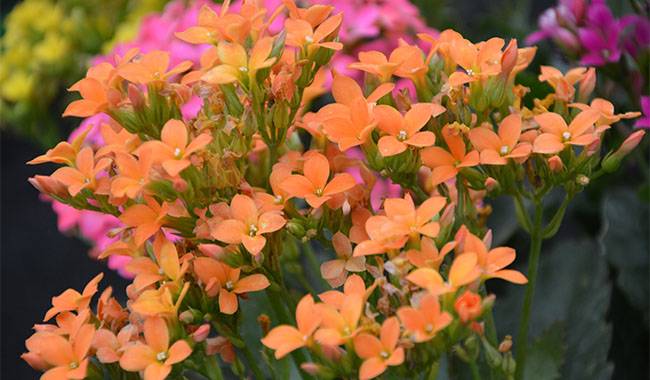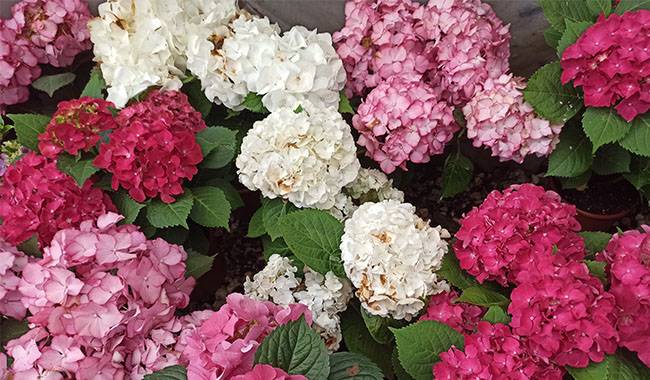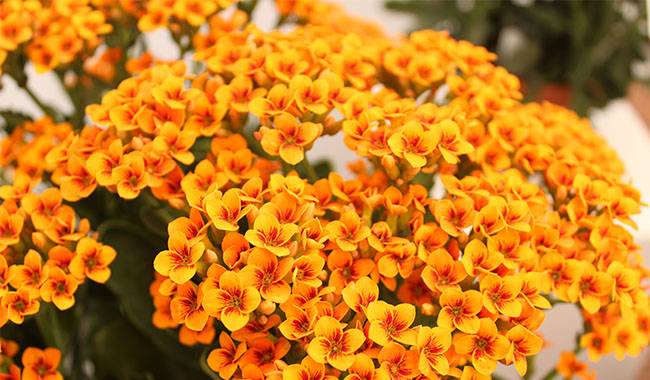
Of all the beautiful blooming “potted” flowers, the most colorful and hardy is the lush Widow’s thrill. thanks to the efforts of plant breeders, there is now a delightful selection of flowering varieties. You can buy it as a gift, for an occasional bouquet, or as a decorative piece for yourself. But if you want to enjoy it for months to come, you’ll have to take care of it. And it’s not hard to take care of – it’s a succulent, after all! You will learn How to Make Widow’s Thrill Flower Bloom last longer in the ThumbGarden article.
WIDOW’S THRILL PLANT DESCRIPTION
This species is a unique and beautiful succulent plant. While there are many medicinal varieties and extravagant ornamental foliage, most people associate this plant-primarily with brightly colored flowers.
The neat, low bushes formed by special pruning and treatment with growth inhibitors look very neat and strikingly flawless. The plant has fleshy, serrated edges, dark green glossy leaves, fleshy shoots, and inflorescence shields.
The distinctive four-petaled cannabis flowers of simple varieties (or dozens of rose-shaped flowers of the best hybrids) offer the most vivid acrylic colors – yellow, orange, red, pink, and even bicolor. Delicate or eye-catching Widow’s thrill can be customized to suit all tastes and interiors.
Widow’s thrill blossfeldiana (Florist Widow’s thrill) and its many hybrids have flooded the shelves, are sold year-round, and have hardly ever disappeared from the market. Whether as a gift or a present for yourself, Widow’s thrill has often turned out to be a disappointment after a few weeks. Within the first few days, bushes that don’t even have foliage to look at underneath the mass of flowers often start to bloom, deform and lose all their luster at home.
WHY WIDOW’S THRILL BLOOMS SO QUICKLY

There are only two factors that can cause Widow’s thrill to bloom at a frustrating rate.
- Natural aging and the end of the flowering period.
- Lack of care or choice of housing conditions.
During the flowering stage, Widow’s thrill is a true “habitual plant”. And the less variation there is, the lower the risk of rapid flowering. However, the main reason for the rapid flowering of the luxuriant bulbs is more often than not attributed to the selection of plants that have been in bloom for a long time, or that have been thrown away irregularly.
When buying a plant, it’s worth remembering that its condition – the stage of flowering, whether more buds or flowers that have already flowered dominate – affects how long it will bloom in your home. A shrub that has just started to bloom can allow you to enjoy the miracle of flowering for a few months.
Even then, don’t expect to bloom forever. The average flowering time for this crop is 2-3 months. Even the “year-round” Widow’s thrill blooms in waves, requiring not only extra light but impeccable care to create such a miracle.
Sooner or later any Widow’s thrill will bloom, it is a natural process. If it is capable, new flower stems will appear after a brief pause. But even if this is not the case, after a proper dormancy period, it can start again.
It is not difficult to extend the flowering period and bring the plant to full bloom – all you need to do is to treat it and its habit with care.
THE BEST CONDITIONS FOR WIDOW’S THRILL
Some species can be considered shade tolerant, but certainly not lush flowering shrubs. They also do not like direct sunlight and will prefer diffused light, but should be as bright as possible. Eastern and western window sills or similar levels of brightness are good.
During cloudy days and winter flowering, additional light will extend the flowering time (at least 8 hours, preferably 10-12 hours). But limiting daylight hours, without which you cannot grow Widow’s thrill according to myth, is not useful for any shrub that has already flowered. It is only used to achieve germination, not to extend flowering time.
Widow’s thrill has much lower temperature requirements. It can grow over a wide temperature range of 50-77 °F (10-25 °C), but during flowering, steady heat of 68-77 °F (20-25 °C) in summer and mild coolness of 59-68 °F (15-20 °C) in fall and winter are best.
Significant temperature fluctuations will result in faster flowering. Ventilation, which is not needed at other times of the year, is also undesirable during flowering. Contrary to ventilation, it prolongs the flowering period. And here’s another secret: don’t rotate flowering plants.
AT HOME CARE WIDOW’S THRILL
Even the relentlessly flowering Widow’s thrill varieties are still succulents. Therefore, they should be treated, always keeping in mind that they do not like to be over-watered and over-fed.
Widow’s thrill requires care rather than too much care.
- Water carefully but regularly, dry out the top substrate, and do not allow standing water in the tray to soak the greens and buds.
- Fertilize only during the growing and flowering periods. Use a special succulent fertilizer during the growing period and a flower fertilizer during the germination and flowering periods, infrequently and not intensively (once every 3-4 weeks, half the dose is enough).
If possible, it is best to follow the care performed by the florist.
Widow’s thrill should always be kept clean: gently dust the foliage with a damp sponge or cloth.
With the right conditions and careful care, these luxurious flowering shrubs will bloom relentlessly and enjoy their pleasure for weeks on end. But leaving wilted inflorescences on Widow’s thrill will shorten the flowering period several-fold. Periodically “sterilize” the plant by cutting old flower stems back to the roots and, if the species allows, periodically remove faded flowers to keep the plant in bloom indefinitely. Damaged, dry, yellowing leaves (usually from the base of the bush) should also be removed regularly.
DO I NEED TO PORT WIDOW’S THRILL AFTER PURCHASE?

Flowering Widow’s thrill plants degenerate quickly and grow very slowly. For lush flowering, it is easier to renew the plant with regular cuttings than to keep the old shrub. In this case, there is absolutely no need for transplanting.
But even if you carefully shape and preserve your plant year after year, allowing it to fully develop its beauty, it is not worth replanting it unnecessarily every year. Only move Widow’s thrill plants to a new container when they fill the previous one.
Replanting should not be rushed after purchase unless it is an emergency procedure due to problems with the substrate or plant condition. This is especially true when the shrubs are in full bloom. Habitat changes are stressful enough. Don’t make the situation worse by changing the container. Allow it to develop normally and adapt to the substrate before moving Widow’s thrill.
There are no rules for transplanting per se. The less contact with the roots, the better. Light, succulent soil, a high level of drainage, small pots depending on the type of root system – that’s all you need for a comfortable Widow’s thrill.
HOW TO ACHIEVE REPEAT FLOWERING OF WIDOW’S THRILL
Once the plant has flowered, cut it back, leaving short stubs or shoots of the desired length to form. for 4-8 weeks, keep the plant in the shade, in a cool place if possible-about 59 °F (15°C), watering sparingly to conserve water.
Once it starts to grow, return it to warmth and maximum light by pruning the branches (standard – 4-5 pairs of leaves or more) to form a dense bush. To form flower buds, limit sunlight to 8-10 hours by artificial shading for 4-6 days.
Widow’s thrill varieties are often recommended for immediate propagation by cuttings. For this purpose, young shoots about 4 inches (10 cm) long are cut from the mother plant and rooted in a common light sandy substrate.







